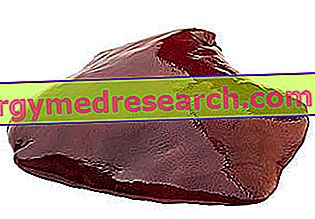
Scientific name
Crataegus oxyacantha L., sin. Crataegus monogynaFamily
RosaceaeOrigin
Spontaneous plant that grows easily anywhere.Synonyms
Hawthorn.
Used Parts
Drug consisting of leaves and flowers (flowering tops).Chemical constituents
- Flavonoids (hyperoside, vitexin, luteolin, rutin, quercetin, apigenin);
- Leucoantocianidine;
- Pentacyclic triterpene acids (Ursolic acid, crategolic ac, oleanolic ac, acantholic acid, neotegolic acid);
- Phenolcarboxylic acids;
- sterols;
- Amines and aminopurines.
Hawthorn in Herbalist: Property of Hawthorn
Among the properties of hawthorn, the main ones relate to clinical use in the treatment of mild heart failure and arrhythmias, ventricular extrasystoles, palpitations, mild arterial hypertension, cardiac dyspnea and senile heart disease.
Furthermore, hawthorn can be attributed a central sedative action in anxious situations.
Biological activity
As mentioned, hawthorn is widely used in the treatment of different types of cardiovascular disorders, thanks to its antihypertensive and chronotropic and inotropic positive properties.
More in detail, these properties are attributable to the proanthociandidins contained in the same plant. In fact, these molecules seem to act by increasing the permeability of cell membranes to calcium ions and increasing the intracellular concentrations of cyclic AMP. All this results in a reduction of coronary spasm, an increase in the flow and strength of myocardial contractility and a reduction in peripheral vascular resistance. While, at high doses, it appears that proanthocyanidins exert a sedative type effect.
The flavonoids contained in hawthorn, on the other hand, are able to exert an antioxidant type of action and to inhibit platelet aggregation, in addition to having also shown to possess a certain antimicrobial, antiviral and cytotoxic activity.
However, the use of hawthorn has been officially approved for the treatment of those mild cardiovascular disorders (class II of the classification made by the NYHA, New York Heart Association) characterized by a reduction in cardiac output.
Hawthorn against reduced cardiac output
As stated above, hawthorn can be used in the treatment of mild cardiovascular disorders associated with a decrease in cardiac output, thanks to the chronotropic and inotropic positive properties exerted by the proanthocyanidins contained in it.
When the hawthorn is used in the form of extract (solvent: ethanol 45% v / v), it is generally recommended to take 160-900 mg of product per day, to be administered in divided doses. The duration of the treatment, then, should not exceed six weeks.
Hawthorn in folk medicine and homeopathy
The effects exerted by the hawthorn on the heart are also known in folk medicine, which uses it to treat hypertension, cardiac ischemia and arrhythmias, as well as a cardiotonic and sedative remedy, but not only.
In fact, hawthorn is also used to reduce inflammation, to reduce capillary fragility and to prevent the breakdown of collagen at the joint level (these activities attributed to hawthorn, most probably, are due to the flavonoids contained in it).
Hawthorn is also used in homeopathic settings, with indications for the treatment of heart failure, arrhythmias, palpitations and angina pectoris, as well as being used as a remedy for feelings of anxiety and stress.
Side effects
In some cases, side effects such as palpitations, tachycardia, dizziness, headaches, hot flushes, dyspnoea, gastrointestinal disorders and flatulence may occur.
Contraindications
The use of hawthorn is contraindicated in case of known hypersensitivity to one or more components, during pregnancy, during lactation and in children under 12 years of age.
Pharmacological Interactions
Hawthorn can interfere with the activity of:
- Antiplatelet agents, as it may increase the risk of bleeding.
- Cardioactive glycosides, because hawthorn can increase its activity.
- Antiarrhythmics, since this plant exerts its effects with a mechanism of action attributable to class III antiarrhythmics.
- Cisapride .
Warnings
The use of hawthorn for the treatment of cardiovascular disorders should take place after the indication of the doctor and always under the strict control of the same. In fact, it is good that the doctor regularly monitors the heart rate and blood pressure of the patients undergoing this treatment.
If at the end of a six-week treatment no changes are noted, or in the event of edema of the lower limbs or chest pain, contact your doctor immediately.



